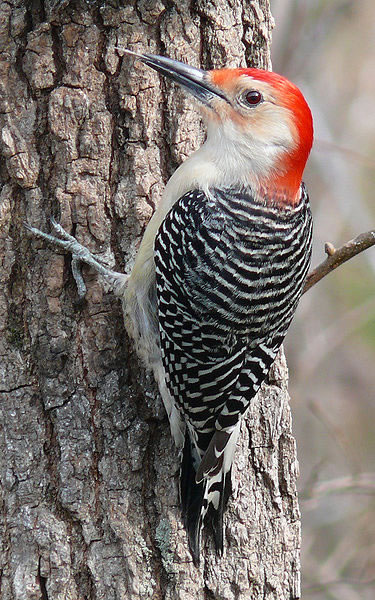Piciformes - Woodpeckers and Toucans

Facts about creatures
- Home
- Animal Classification
- Animal Habitats
- Amphibians
- Arthropods
- Bats
- Birds
- Carnivorans
- Cetaceans
- Chordates
- Crustaceans
- Dinosaurs
- Diprotodonts
- Elephants
- Fish
- Golden Mole
- Insects
- Lagomorphs
- Mammals
- Mammal Teeth
- Marsupial Mole
- Metamorphosis
- Mollusks
- Primates
- Reptiles
- Rodents
- Ruminants
- Soricomorphans
- Tenrec
- Tetrapods
- Vertebrates
Piciformes – Woodpeckers and Toucans
Piciformes is the order of birds that includes woodpeckers, toucans, barbets, puffbirds, honeyguides and jacamars.
There are about 400 species of Piciform on Earth, most of which are woodpeckers.
Piciformes can be found on every continent on Earth, except for Australia and Antarctica, in forests, grassland, parks and orchards.
Most Piciformes live in trees (are arboreal). Piciformes have evolved to have physical adaptations that allow them to easily move about, find food and build nests in trees.

Only a few species of Piciformes migrate.
Most Piciformes eat insects (are insectivorous), although they may also include fruit, nuts and other items in their diet.
A honeyguide will eat beeswax, which it obtains by using its calls to “guide” human beings to bees’ nests, and then waiting for the humans to break open the nests.
Piciformes range in length from about 3 inches to about 2 feet and in weight from about 1/3 of an ounce to about 20 ounces.
They often have black and white feathers with red and yellow patches.
Almost all Piciformes have zygodactylous feet. This means that two of the toes on each foot point forward, and two toes point backward.
This arrangement makes it easy for these birds to climb up and down tree trunks and to move along tree branches.
Piciformes have long tongues that can reach into cavities in trees to grab insects
They have strong, heavy bills.
Some Piciformes use their bills to drill hole in trees and then use their tongues to pick insects out of these holes.
Piciformes build their nests in holes in trees and rocks.
They may use their strong bills to drill cavities in trees for nesting.
Woodpeckers and a few species of barbet communicate by drumming – rhythmically tapping their bills on hollow trees or other hollow structures.
The bone at the front of a Piciform’s skull is thickened with a layer of cartilage. This layer of cartilage acts as a shock absorber when the bird taps its beak against a tree.
Although all Piciformes are good at climbing, only the honeyguides are good flyers.
Jacamars are the only Piciformes that have down feathers at any time in their lives.
Down feathers are fine feathers that often grow underneath a bird’s external feathers. Many young birds have only down feathers.
Piciformes are altricial. This means that their young cannot move around by themselves as soon as they are hatched.
The young need their parents to bring food to them.
Animals that can move about by themselves as soon as they are hatched or are born are precocial.